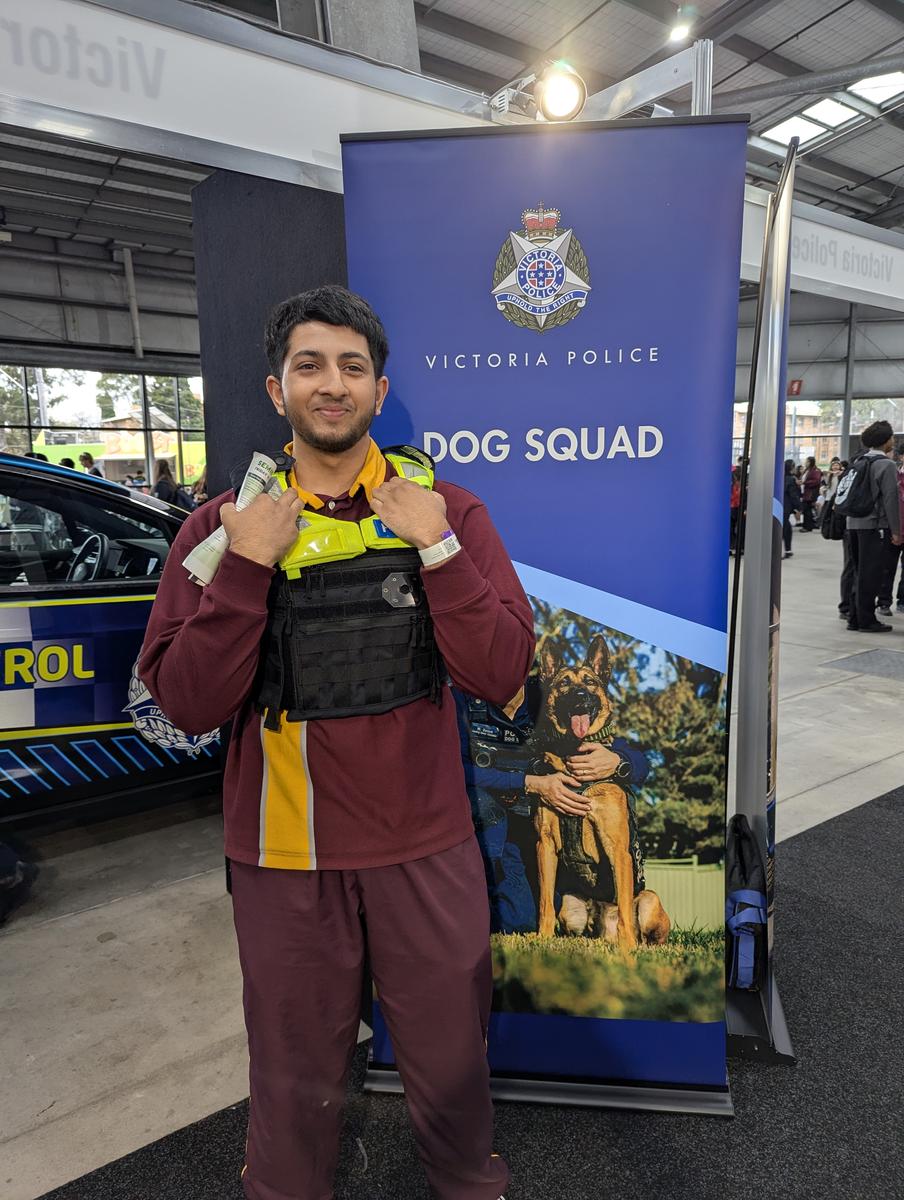Careers

Futures Expo – Tuesday 29th July 3.00 pm to 5.00 pm
Clyde North: Geode Centre
Cranbourne: Terry Feely Learning Centre – Library
We invite families of students in Years 8 to 12 to join us and explore the subject options available for 2026. This is an opportunity to help make informed decisions regarding upcoming subject selections. Key Learning Area staff will be on hand to answer questions, and our Curriculum team will provide Year Level-specific information sessions for families to clarify the requirements.
Year 9 SELLEN Career and Try a Trade Expo
Our Year 9 students from Clyde North and Cranbourne attended the SELLEN Career and Try a Trade Expo on Tuesday, May 13th. This event offered secondary school students a diverse range of TAFE options, higher education opportunities, and insights into various industries and trades. It served as a dynamic platform for attendees to explore career options, engage with industry professionals, and gain hands-on experience through interactive exhibits and workshops.
Students discovered valuable information about different career paths, spanning from traditional trades to emerging industries. The next event for our Year 9 students is our internal Try a VET Day, which will provide an overview of our college-based VET in School programs and the advantages of completing these programs. Next term, students will select subjects for 2026, and the information available at these events will help inform their decisions.
Year 12 Victorian Careers Expo
On Friday, May 16th, our Year 12 VCE students attended the Victorian Careers Expo at the Melbourne Showgrounds to explore the various course and career options available after secondary school. Students had a wealth of information available to them, including interactive displays and information sessions on VCE studies, featuring many prominent institutions in further education.
Throughout the day, students were able to discuss their options with representatives from:
- Universities, TAFE colleges, and training providers
- Providers of VCE resources, information, and services
- Organisations offering apprenticeship information and opportunities
- Organisations providing employment opportunities
- Organisations with cadetship opportunities
- Providers of tutoring services, lectures, and study skills programs
- Providers of international exchange and GAP year programs
- Organisations offering youth services and programs
This year has been quite fast-paced for our Year 12 students, and confirming post-secondary options can be daunting. Next term, students will select a university or TAFE institute to attend and participate in a tour of the facilities to help them with these important decisions.
Navigating your post-high school pathways
Figuring out what to do after high school can feel like standing at a crossroads with no map. Whether you're considering university, vocational education, or jumping straight into the workforce, making these decisions can feel overwhelming. But don't worry - with some structured thinking and the right resources, you can find a post-high school pathway that's perfect for you.
Reflect on where you are
Before you start researching specific courses or careers, take some time to reflect on yourself:
What subjects do you genuinely enjoy at school?
What activities do you enjoy the most?
What skills come naturally to you?
What values are important to you in a future career?
Write down your answers somewhere; this self-reflection will be valuable as you explore your options.
Explore your options
There's no single "right" path after high school. You and your goals are unique, so it's up to you where to go next. Here are some of the main routes you might consider:
University
Going on to university is probably the right option if you're interested in careers that require specific academic qualifications, and if you enjoy theoretical learning alongside practical application. Undergraduate degrees typically take 3-4 years full-time to complete and can lead to careers in practically any industry you're interested in.
These institutions might also offer part-time or online learning, diplomas, and other qualifications that can be completed in a shorter amount of time (and may count as credits towards a degree in future if you decide to go there down the track).
Vocational education
Vocational education, which includes apprenticeships and traineeships, focuses on combining practical on-the-job training, with job-specific skills and can range from certificates to diplomas. This route could be right for you if you prefer more hands-on learning, want to earn while you learn, and are keen to enter the workforce sooner.
Many trades, technical careers, and service industries prioritise vocational qualifications, but they're also available in emerging industries like IT and healthcare as well.
Work
Some industries and particular roles value experience and on-the-job training more than formal qualifications. Starting work immediately might be the right choice if you've found an opportunity in a field you're passionate about or if you're happy to enter the workforce in entry level positions and aim to work your way up.
Gap year
Undecided about your next steps? That's OK. Taking a year to work, volunteer, travel, or explore different interests could help you gain clarity about your future direction while still developing valuable life skills.
You can take the Gap Year Quiz if you're unsure if this is the right option for you.
Practical steps to take now
Now that you know your options, how do you go about choosing which one is best for you? Following these steps might help:
Do your research
Start by diving deep into the options that interest you most. Attend career expos and institution open days, whether in-person or virtual, to get a feel for different institutions and their offerings. These events often provide opportunities to speak directly with current students and instructors who can give you honest insights about their programs.
Don't limit yourself to just formal events though. Reach out to people already working in fields that interest you and ask them for questions about their job and the pathway they took to get there. Firsthand accounts can be invaluable in understanding what a career path is really like day-to-day.
Make use of online career matching tools like the Cadi Career Clusters too - they might open your options to careers you hadn't considered before that align well with your interests and abilities.
Experience before you co
mmit
Nothing beats firsthand experience to determine if a path is right for you. Try to arrange work experience or job shadowing in areas you're considering, even a day or two can give you valuable insights into what the work environment is like. Volunteering with relevant organisations is another excellent way to gain exposure while also building your resume and network.
If you're interested in a particular field but not ready to commit fully, look for short courses or workshops that will give you a taste of the subject matter without a major time or financial investment.
Consider the practicalities
As you narrow down your options, think carefully about the practical aspects of each pathway. Consider whether you're willing to relocate for study or work, or if you'd prefer to stay close to home or study online.
Research the financial implications thoroughly. Not just tuition fees, but also living expenses, potential earnings after graduation, and opportunities for scholarships or financial aid.
Be realistic about the time commitment required for different pathways, and check the entry requirements carefully to ensure you're taking the right subjects or building the necessary skills to qualify for your chosen programs.
Create a Plan B (and C)
Even the most carefully laid plans sometimes need to change, so it pays to have a backup option in mind. Research alternative entry pathways to your preferred courses - lots of organisations offer options based on a variety of factors.
Consider starting with a related course where entry might be less competitive, with the possibility of transferring internally to your preferred course later. Look into bridging or foundation programs that can help you meet entry requirements if your current qualifications fall short.
And most importantly, remember that there are usually multiple routes to reach the same destination. Having a backup plan can reduce stress if your first choice doesn't work out.
Narrowing down your choices
If you're feeling overwhelmed by choices, try this approach:
Make a list of all the options you're considering
Create a pros and cons list for each
Eliminate options that don't align with your values or practical needs
Research the remaining options in more depth
Talk through your shortlist with trusted advisors (teachers, career counsellors, family members)
Not only will these steps help you to make a decision, they could help you to make the best decision.
Ms Melissa Dillon & Ms Robyn Cardamone
Careers - St Peter's College


